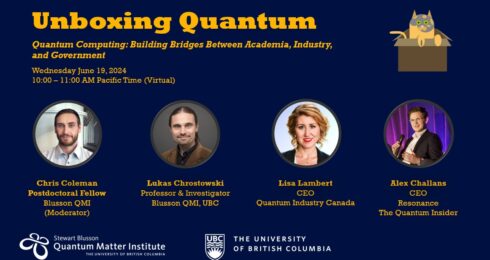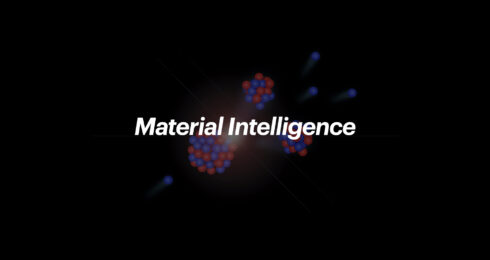Research in quantum materials is paving the way for groundbreaking discoveries at the forefront of science and is poised to drive technological advancements redefining the future of industries such as mining, energy, transportation, and MedTech.
A technique called time- and angle-resolved photoemission spectroscopy (TR-ARPES) has emerged as a powerful tool, enabling researchers to explore equilibrium and dynamical properties of quantum materials via light-matter interaction.
Published in the world’s premier physics review journal Review of Modern Physics, a recent review paper by Fabio Boschini from the Institut national de la recherche scientifique (INRS), Marta Zonno from Canadian Light Source (CLS) and Andrea Damascelli from UBC’s Stewart Blusson Quantum Matter Institute (Blusson QMI), illustrates that TR-ARPES has rapidly matured into a highly effective technique over the last two decades.
“TR-ARPES has ushered in a new era of quantum materials research, allowing us to ‘knock on the system’ and observe how it responds, and push materials out of equilibrium to uncover their hidden properties,” said Blusson QMI Scientific Director Andrea Damascelli.
The study provides a comprehensive review of undertaking research using TR-ARPES and its evolving significance in exploring light-induced electron dynamics and phase transitions in a wide range of quantum materials.
“TR-ARPES is an effective technique not only for fundamental studies, but also for characterizing out-of-equilibrium properties of quantum materials for future applications,” said Fabio Boschini, who is also a QMI Affiliate Investigator.
“The scientific community is currently investigating new “tuning knobs” to control the electronic, transport, and magnetic properties of quantum materials on demand. One of these “tuning knobs” is the light-matter interaction, which promises to exquisitely control the properties of quantum materials on ultrafast timescales,” Boschini said.
“TR-ARPES is the ideal technique for this purpose since it provides direct insight into how light excitation modifies electronic states with time, energy, and momentum resolution.”
TR-ARPES combines condensed matter spectroscopy (ARPES) with ultrafast lasers (photonics), bringing together research groups from both fields. The technique owes much of its success to significant advancements in developing new laser sources capable of producing light with precise characteristics.
Advancements in various laser source technologies were detailed in another major review paper published in Physics Reports in 2023 by Blusson QMI researchers MengXing Na, Arthur Mills, and Investigator David Jones.
“In this review, we aim to survey the development of TR-ARPES and its capabilities to identify prominent trends in its use as a probe of quantum materials as well as areas that need further innovation to meet the needs of the community,” said Na.
“In TR-ARPES, we take advantage of the interaction between light and matter to both manipulate the material and study it. This review paper highlights the various ways we have pushed the expansion of parameter space – from intensity to polarization, photon energy, and much more. This allows us to interact with the material in new and interesting ways to control and probe its behaviour.”
“When developing laser sources for TR-ARPES, there are many competing technical aspects that, in turn, directly impact what characteristics of quantum materials can be studied. Thus, a tight collaboration between teams is critical,” said Jones.
“The advances and breakthroughs we describe in the review paper would not have been possible without multidisciplinary teams collaborating across the board,” added Damascelli.
“Laser and spectroscopy experts develop and commission the instrumentation while experimentalists and theorists design the experiments and identify the suitable materials.”
Similarly, UBC QMI’s achievements in creating a state-of-the-art TR-ARPES facility at the UBC-Moore Centre for Ultrafast Quantum Matter are a result of decades of close scientific collaborations between research groups led by Jones and Damascelli, as well as many others from QMI and the Max Planck-UBC-UTokyo Centre for Quantum Materials.
“Collaboration is at the heart of all UBC QMI activities – and our TR-ARPES program is exemplary of teamwork at its best,” Damascelli said.
Image created by DALL·E/OpenAI
Media contact: Shahrzad (Zad) Abbasi | 604 360 6761 | shahrzad.abbasi@ubc.ca


